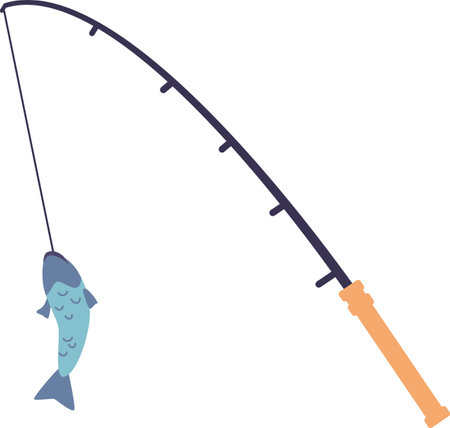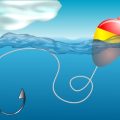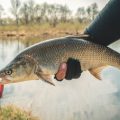Introduction to Mackerel Fishing in the UK
Mackerel fishing is a cherished tradition across the British Isles, offering an accessible and exhilarating experience for both seasoned anglers and enthusiastic beginners. Every summer, shoals of shimmering mackerel sweep along Britain’s rugged coastlines, drawing crowds to piers, harbours, and rocky outcrops. The appeal lies not only in the spirited fight these fish offer on light tackle but also in their role as a staple in British seaside cuisine—from fresh fillets grilled over coals to classic smoked mackerel pâté. Each mark holds its own story, shaped by generations of local anglers who know precisely when tides and weather align for the best catches. This blend of natural spectacle and community tradition makes mackerel fishing more than a pastime; it’s a seasonal ritual woven into the fabric of coastal life. In this guide, we’ll explore ten iconic mackerel marks renowned among local fishing circles—each celebrated for its reliable action, unique setting, and the camaraderie found along its shores.
2. Essential Tactics and Tackle for British Waters
Mackerel fishing around the British Isles demands a nuanced approach, as seasoned local anglers will attest. The UK’s ever-changing weather, varied tidal flows, and rugged coastlines require technical adaptations in both tackle selection and angling technique. Here’s a comprehensive review of the rigs, rods, and lures that consistently deliver results at the top mackerel marks, along with expert tips for optimising your setup to suit British conditions.
Rods & Reels: Local Preferences
Most experienced British anglers opt for lightweight spinning rods between 9ft and 11ft, paired with fixed spool reels loaded with 12–15lb monofilament or braid. This combination offers the flexibility to cast from piers, rocky outcrops, or sandy beaches—common features at renowned marks like Chesil Beach or Whitby Pier.
| Rod Length | Action | Ideal Location |
|---|---|---|
| 9ft–10ft | Medium-Fast | Piers & Harbours |
| 10ft–11ft | Fast | Open Beaches & Cliffs |
Proven Rigs & Lure Selection
The classic “feather rig” remains the go-to choice across much of the UK coastline. However, local experts often tweak their setups based on prevailing water clarity and tidal movement. Below is a breakdown of popular rigs and their optimal use cases:
| Rig Type | Lure/Bait | Best For | Tidal/Weather Notes |
|---|---|---|---|
| Standard Feather Rig (Sabiki) | Tinsel or Mackerel Skin Feathers | Clear Water & High Tide | Increase weight during strong tidal runs |
| Float Rig | Sandeel Strip / Mackerel Strip | Piers & Calm Bays | Add split shot for choppy conditions; adjust float depth with tide height changes |
| Spinner/Jig Head | Silver Spoon / Metal Jig (20–40g) | Rocky Outcrops & Fast Drops | Lighter weights in calm; heavier jigs when wind picks up or tide is racing out/in |
Tactical Adjustments for UK Conditions
Tides: Mackerel are most active during flooding tides. Local anglers recommend timing sessions to coincide with the last two hours of the incoming tide for peak action.
Weather: Overcast days can bring mackerel closer to shore; bright sunlight may push them deeper—switch to heavier lures and let them sink longer.
Swell & Wind: Adapt casting weight and lure profile—use streamlined metals in blustery conditions to maintain distance and control.
Expert Tip:
Avoid overcomplicating your terminal tackle. Keep connections strong yet streamlined, particularly if you’re targeting shoals at classic venues such as Brighton Marina or St Ives Harbour where swift retrieval can mean landing multiple fish per cast.

3. Northern Marks: Scotland and the North East Coast
The rugged northern coastline of the British Isles, stretching from the Moray Firth to Northumberland, offers some of the most prolific mackerel fishing marks in the country. Local anglers swear by these cold-water hotspots, where shoals gather in great numbers during peak months. Standout marks include Aberdeen’s harbour walls, Stonehaven’s breakwaters, and further south, the historic piers at Seahouses and Blyth.
Best Times for Northern Shoals
Timing is crucial along Scotland and the North East coast. The season typically kicks off in late May, peaking through July and August when water temperatures rise just enough to encourage mackerel inshore. Early mornings or evenings are prime, especially on a rising tide when baitfish are pushed closer to shore. Locals recommend keeping an eye on weather patterns; a spell of calm after rough seas often brings fish close for a feeding frenzy.
Access Tips from Local Anglers
Accessibility varies across these marks. Aberdeen and Stonehaven offer well-maintained harbour walls and piers, making them ideal for both seasoned anglers and families. In contrast, more remote spots like Collieston or Craster require a bit of a trek—sturdy footwear is a must. Parking can be limited during weekends in popular areas, so arrive early or consider quieter midweek sessions for a more relaxed experience.
Tactical Approaches for Chilly Waters
Mackerel in northern waters can be selective due to lower temperatures. Local anglers favour silver feather rigs or daylights, which mimic sandeel and sprat—main forage in these parts. Fast retrieves are effective when fish are feeding actively, but don’t discount slower lifts and drops if they’re holding deeper. Casting distance can be an edge here; bring a rod capable of hurling your rig beyond 50 yards to reach passing shoals just off the drop-offs. Pay attention to seabird activity—gannets diving or terns hovering are telltale signs that mackerel are on the move.
Welsh and Irish Hotspots
When considering the western reaches of the British Isles, Wales and Ireland stand out for their consistently productive mackerel marks. Local knowledge is paramount here—seasoned anglers point to a blend of classic piers, rugged headlands, and tidal estuaries that create prime conditions for shoaling mackerel. Below is an analysis of top-performing locations and key tactical advice from regional experts.
Productive Locations: Wales & Ireland
| Region | Top Mark | Best Time | Local Tip |
|---|---|---|---|
| North Wales | Llandudno Pier | June–August, incoming tide | Use light spinners early morning for best results |
| South Wales | Porthcawl Breakwater | Late July–September, dusk hours | Sabiki rigs with silver flash prove irresistible here |
| Ireland – East Coast | Bray Harbour | July–September, high tide | Mackerel chase baitfish close in after sunset |
| Ireland – West Coast | Lahinch Promenade | Mid-June–late August, rising tide | Sandeel imitations work well on breezy days |
Tactical Considerations for Western Shores
The variable Atlantic weather along these coasts means conditions can change rapidly. Regulars recommend packing heavier leads to counter strong swells, especially on exposed marks such as Porthcawl and Lahinch. Anglers should also pay attention to water clarity; after heavy rainfall or storms, mackerel may move offshore until clarity improves. It pays to monitor tidal movements closely—often, the hour before and after high water produces the greatest shoals as baitfish are pushed closer to shore.
Angler Insights: Regional Strategies
- Tide Timing: Both Welsh and Irish marks fish best around spring tides when currents are stronger.
- Lure Selection: While feathers remain popular, many local anglers now favour sleek metal lures or sandeel patterns for greater casting distance and versatility in rougher seas.
- Crowd Avoidance: Arriving at less obvious times—such as early morning or midweek evenings—often gives access to undisturbed shoals and better catch rates.
- Sustainable Practice: Regional angling clubs promote catch limits and selective retention to preserve healthy stocks for future seasons.
Conclusion: Unlocking Western Potential
The mackerel hotspots along the Welsh and Irish coasts reward those who adapt to changing maritime conditions and leverage local insight. Whether fishing off a bustling pier or a wild Atlantic headland, strategic timing and careful lure selection remain crucial for success in these revered western waters.
5. Southern and South-Western Shores
Classic Marks Along the South Coast
The southern fringe of Britain, stretching from Kent to Cornwall, offers a diverse array of mackerel hotspots. Notable marks include Brighton Marina’s arms, Chesil Beach’s pebbled expanse, and the historic breakwaters at Plymouth. Local anglers frequently highlight these venues for their accessibility, reliable shoals in summer, and classic English Channel panoramas. Early mornings or late evenings are prime times, when mackerel push baitfish close to shore under low light conditions.
Cornish Tips and Tactics
Cornwall stands out as a mackerel angler’s haven, with landmarks like Porthleven Pier and Newlyn Harbour consistently producing results. The Cornish approach leans towards feathering rigs with silver or luminous lures—reflecting the region’s clear waters and abundant sandeel populations. Local advice stresses casting beyond the surf line and retrieving briskly to mimic fleeing prey. In bustling tourist months, mobile tactics—roaming along beaches or piers—help you locate active shoals away from crowded spots.
Thriving in Dynamic Channel Conditions
The English Channel is notorious for its changeable weather and strong tidal surges. Success here hinges on reading the water: look for rips, eddies, or visible baitfish activity. Heavier leads (2-3oz) allow for longer casts against prevailing winds, while smaller hooks (size 4-6) improve hook-up rates on finicky fish. Local veterans recommend packing waterproofs and being prepared to adapt quickly; sudden squalls or shifting tides can make or break a session. Ultimately, patience paired with flexibility is key to unlocking the full potential of these storied southern shores.
6. Tide, Weather, and Local Etiquette
Decoding the Influence of Tides on Mackerel Behaviour
Success at the top mackerel fishing marks around the British Isles is often dictated by your understanding of local tidal movements. British anglers know that mackerel are highly responsive to tide changes, with the most productive bites typically occurring during the flooding or ebbing tide rather than at slack water. Headlands like Selsey Bill or St Bees come alive when a strong tidal push funnels baitfish close to shore, drawing in shoals of hungry mackerel. Always consult local tide timetables and arrive ahead of the optimal window; being prepared to adapt as tides shift can be the difference between an empty bucket and a full stringer.
The Role of British Weather Patterns
The unpredictable UK weather is a constant companion for every angler. Overcast days with a gentle sou’westerly breeze are favoured, as these conditions encourage mackerel to venture closer to shore. Bright sunlight can drive fish deeper, while choppy seas or heavy rain may scatter shoals. Experienced locals keep an eye on barometric pressure drops—a sign that mackerel may feed more aggressively before unsettled weather sets in. Equally, safety must come first: exposed marks such as Portland Bill or Holyhead Breakwater can become treacherous in high winds or rough seas, so always heed Met Office warnings and respect nature’s power.
Unwritten Rules: Shore Angling Etiquette in Britain
Part of what makes mackerel fishing special across the UK is its sense of community—rooted in unspoken etiquette passed down through generations. When you arrive at a mark, greet fellow anglers with a nod or quiet word; it’s customary to leave ample space (at least a rod length) between you and your neighbour, especially during busy summer runs. Avoid casting over others’ lines and be mindful not to monopolise prime spots for too long if crowds build up. Take all litter home—including discarded line and hooks—and respect local wildlife, particularly nesting seabirds on cliffs or piers. Many seasoned anglers also share catch reports or tips with newcomers, fostering a tradition of camaraderie unique to British shores.
Local Knowledge: Ask Before You Cast
Lastly, if you’re new to a particular venue—whether it’s Chesil Beach, Porthkerris Cove, or Aberdeen Harbour—don’t hesitate to ask regulars about best practices or seasonal variations. Most will gladly offer advice on tides, weather quirks, and respectful behaviour at their favourite marks. By blending tactical know-how with local etiquette, you’ll not only catch more mackerel but earn lasting respect among Britain’s tight-knit angling community.
7. Sustainability and Catch Care
Best Practice Advice from UK Fishing Communities
Responsible mackerel fishing is now more important than ever, particularly at the top marks around the British Isles. Local angling communities have long championed sustainable practices, ensuring healthy fish stocks for future generations. Here’s what seasoned UK anglers recommend to strike a balance between thrilling sport and environmental stewardship.
Responsible Harvesting: Take Only What You Need
One of the core principles among local anglers is “catch what you can eat.” Mackerel are prolific, but over-harvesting at popular marks like Chesil Beach or Porthcawl can put unnecessary pressure on stocks. Many clubs suggest a sensible self-imposed bag limit—typically enough for a meal or two, rarely more than a dozen fish per session. This helps maintain healthy shoals and preserves quality fishing for all.
Local Conservation Measures
Across renowned marks such as Brighton Marina or Scarborough Pier, conservation-minded anglers actively participate in beach clean-ups and promote the use of barbless hooks to reduce injury to released fish. There’s also growing advocacy for seasonal awareness: targeting mackerel only during peak runs (usually late spring to early autumn) when their numbers are highest, minimising disturbance during spawning periods.
Handling Catch for Quality and Sustainability
The way you handle your catch makes a significant difference—not just for sustainability, but also for table quality. UK anglers recommend dispatching mackerel swiftly using humane methods such as the Iki Jime spike or a firm tap above the eyes. Immediate gutting and chilling on ice, even with a simple cool box on the pier, preserves freshness and flavour. If releasing, wet your hands before touching the fish, unhook gently, and return them promptly to minimise stress and scale loss.
A Shared Responsibility
Sustainable mackerel fishing around the British Isles isn’t just about following rules—it’s a shared ethos among local communities. By respecting bag limits, supporting conservation efforts, and handling each fish with care, we ensure these iconic marks continue to thrive for years to come.


